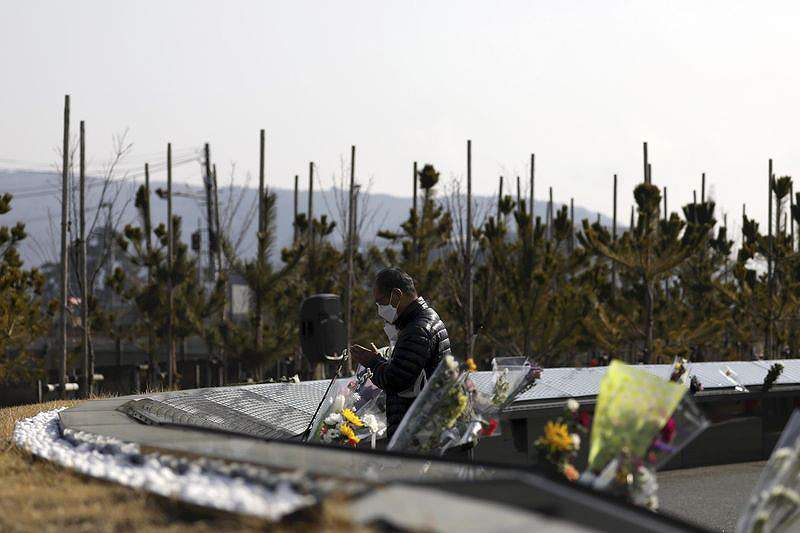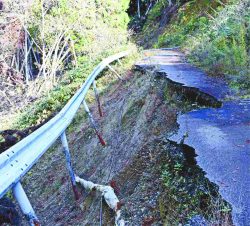
Visitors to a memorial park in Ishinomaki, Miyagi Prefecture, offer prayers Friday to people who died in the Great East Japan Earthquake.
16:26 JST, March 11, 2022
Friday marked the 11th anniversary of the Great East Japan Earthquake that left more than 22,000 people dead or missing.
In areas hit by the massive tsunami caused by the earthquake in the Tohoku and Kanto regions, people offered prayers to family members and loved ones who perished in the calamity.
Fourteen municipalities, or more than 40% of all the coastal municipalities in Iwate, Miyagi and Fukushima prefectures, decided against holding memorial services this year, citing reasons such as the passage of a decade since the disaster. Some municipalities also decided to forgo speeches by representatives of bereaved families due to the heavy burden placed on such speakers.
Even now, some 38,139 people, mainly from Fukushima Prefecture, are unable to return to their homes. The evacuation order is scheduled to be partially lifted this spring in prefectural zones designated as being “difficult to return to.” But it is unclear how many former residents will return to their previous dwellings.
The population continues to decline in areas hit by the tsunami, even after housing lots and seawalls were constructed. Affected areas are grappling with the issue of how to maintain their respective communities.
According to the National Police Agency and other sources, the earthquake and tsunami left 18,423 people dead or missing. A further 3,786 people have died as a result of related causes, such as falling ill while living as evacuees. Temporary housing units — built mainly in Iwate, Miyagi and Fukushima prefectures — have reduced in number to about 750 from a peak of about 120,000.
Evacuation orders have been lifted in 70% of the areas in 11 municipalities that were subject to the orders issued after the accident at Tokyo Electric Power Company Holdings, Inc.’s Fukushima No. 1 nuclear power plant.
In the remaining 30% of the difficult-to-return-to zones, the central government plans to establish reconstruction bases to prioritize decontamination work to prepare for residents’ return ahead of the orders being lifted this spring.
However, many people have built new homes or found employment in the places to which they were evacuated. According to a survey conducted last year by the Reconstruction Agency and others, an average of just 30% of former residents of municipalities that have the special zones said they had “already returned” or “want to return” to the areas.
The central government plans to release treated radioactive water from the Fukushima No. 1 nuclear power plant into the ocean as early as next spring.
"Society" POPULAR ARTICLE
-

M4.9 Earthquake Hits Tokyo, Neighboring Prefectures
-

Israeli Tourists Refused Accommodation at Hotel in Japan’s Nagano Pref., Prompting Protest by Israeli Embassy and Probe by Prefecture
-

M7.5 Earthquake Hits Northern Japan; Tsunami Waves Observed in Hokkaido, Aomori and Iwate Prefectures
-

Tsukiji Market Urges Tourists to Avoid Visiting in Year-End
-

M5.7 Earthquake Hits Japan’s Kumamoto Pref., Measuring Upper 5 Intensity, No Tsunami Expected
JN ACCESS RANKING
-

Keidanren Chairman Yoshinobu Tsutsui Visits Kashiwazaki-Kariwa Nuclear Power Plant; Inspects New Emergency Safety System
-

Tokyo Economic Security Forum to Hold Inaugural Meeting Amid Tense Global Environment
-

Imports of Rare Earths from China Facing Delays, May Be Caused by Deterioration of Japan-China Relations
-

University of Tokyo Professor Discusses Japanese Economic Security in Interview Ahead of Forum
-

Japan Pulls out of Vietnam Nuclear Project, Complicating Hanoi’s Power Plans
























